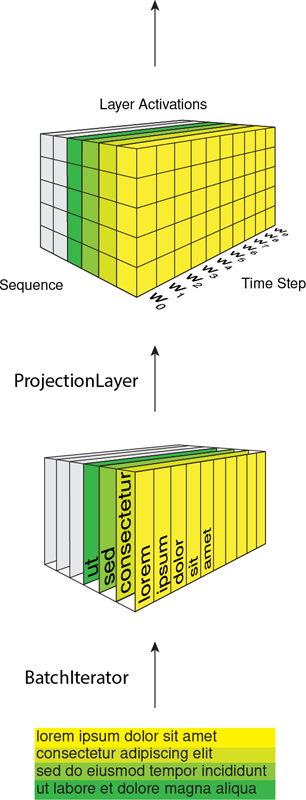Contributing¶
You’re welcome to contribute.
Fork the repository on GitHub.
Clone the forked repository into a local directory:
git clone my-repository-urlCreate a new branch:
git checkout -b my-new-featureCommit your changes:
git commit -aPush to the branch:
git push origin my-new-featureSubmit a pull request on GitHub.
Source code packages¶
theanolm.commands package contains the main scripts for launching the
subcommands.
theanolm.network package contains Network class, which constructs the
network from layer objects and stores the neural network state (parameters).
Each layer type is implemented in its own class that derives from
BasicLayer. These classes specify the layer parameters and the mathematical
structure using symbolic variables.
theanolm.parsing package contains classes for iterating text and converting
it to mini-batches.
theanolm.training package contains Trainer class, which performs the
training iterations. It is responsible for cross-validation and learning rate
adjustment. It uses one of the optimization classes derived from
BasicOptimizer to compute the gradients and adjust the network parameters.
theanolm.scoring package contains the TextScorer class for scoring
sentences and LatticeDecoder class for decoding word lattices.
TextScorer is used both for cross-validation during training and by the
score command for evaluating text.
theanolm.textsampler.TextSampler class is used by the sample command for
generating text.
Neural network structure¶
A Network object contains tensors input_word_ids, input_class_ids,
and mask that represent the mini-batch input of the network, i.e. a set of
n word sequences, where n is the batch size. These symbolic variables represent
two-dimensional matrices. The first dimension is the time step, i.e. the index
of a word inside a sequence, and the second dimension is the sequence. The mask
indicates which elements are past the sequence end; the output will be ignored
if the corresponding mask value is zero. Theano functions that utilize the
network have these tensors as inputs. Their values will be read from a text file
by a BatchIterator.
Layers receive a list of input layers in the constructor. The constructor
creates the initial values of the layer parameters. Every layer implements the
create_structure() method that describe its output, given its parameters and
the output of its input layers.
The Network constructs the layer objects. First layer object is a
NetworkInput, which is not a real layer, but just provides in its output
either the word ID or class ID matrix. The first layer following a
NetworkInput should be a ProjectionLayer. It maps the integer word IDs
into floating point vectors. Thus the projection layer and all the subsequent
layers output a three-dimensional tensor, where the third dimension is the
activation vector.
